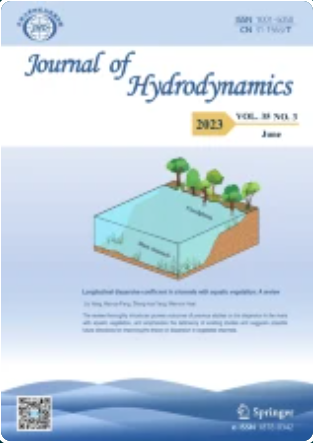Numerical investigation of the cavitation noise around a marine propeller focusing on the influence of ventilation
Abstract
Cavitation noise around propellers has many adverse effects. It is still very limited nowadays to inhibit propeller cavitation noise in engineering. In this study, the cavitation noise around a PPTC propeller is simulated using the large eddy simulation (LES) coupled with the porous Ffowcs Williams-Hawkings (PFW-H) equation. The investigation aims to find a strategy to suppress cavitation noise and analyze the noise suppression mechanism. The predicted hydrodynamic results agree well with the experimental data and are utilized in the hydroacoustic analysis. The hydroacoustic results indicate that the pseudo-thickness noise dominates the dominant frequency component of the total cavitation noise due to the effect of cavity evolution, which is one of the reasons why the pseudo-thickness noise dominates the total cavitation noise. A method is found to weaken the cavitation noise through ventilation at the generation location of the sheet cavity (SC). It is worth noting that ventilation inhibits the generation and development of SC by changing the pressure distribution on the suction surface of the blade and pushing away the cavities around the ventilation holes. Moreover, cavity evolution noise dominates the fluid volume evolution noise under the ventilated cavitating condition. Ventilation significantly attenuates the vapor volume pulsation and thus the cavity evolution noise, which leads to a reduction in pseudo-thickness noise and total cavitation noise. The ventilation mainly reduces noises at the dominant frequency of the pseudo-thickness noise and the total cavitation noise.

 求助内容:
求助内容: 应助结果提醒方式:
应助结果提醒方式:


